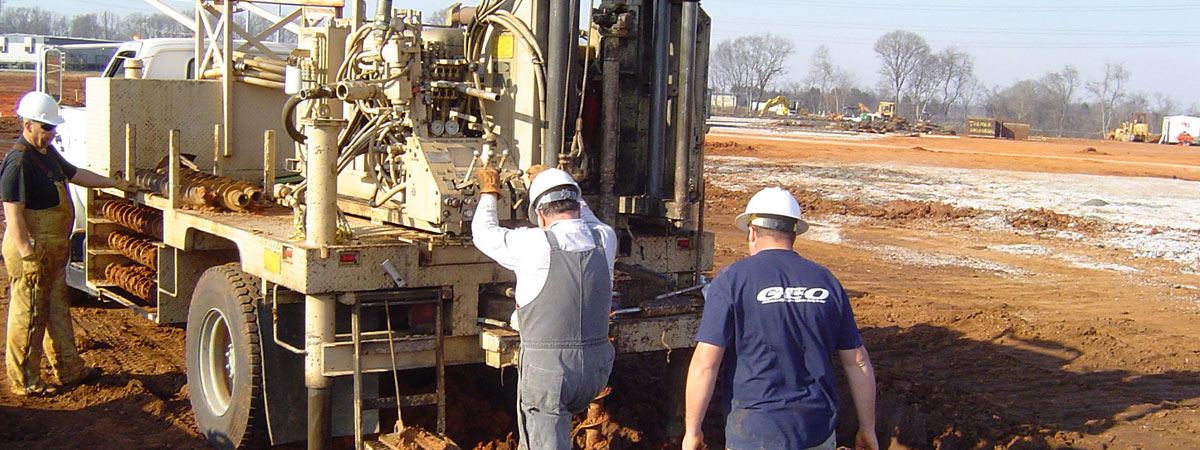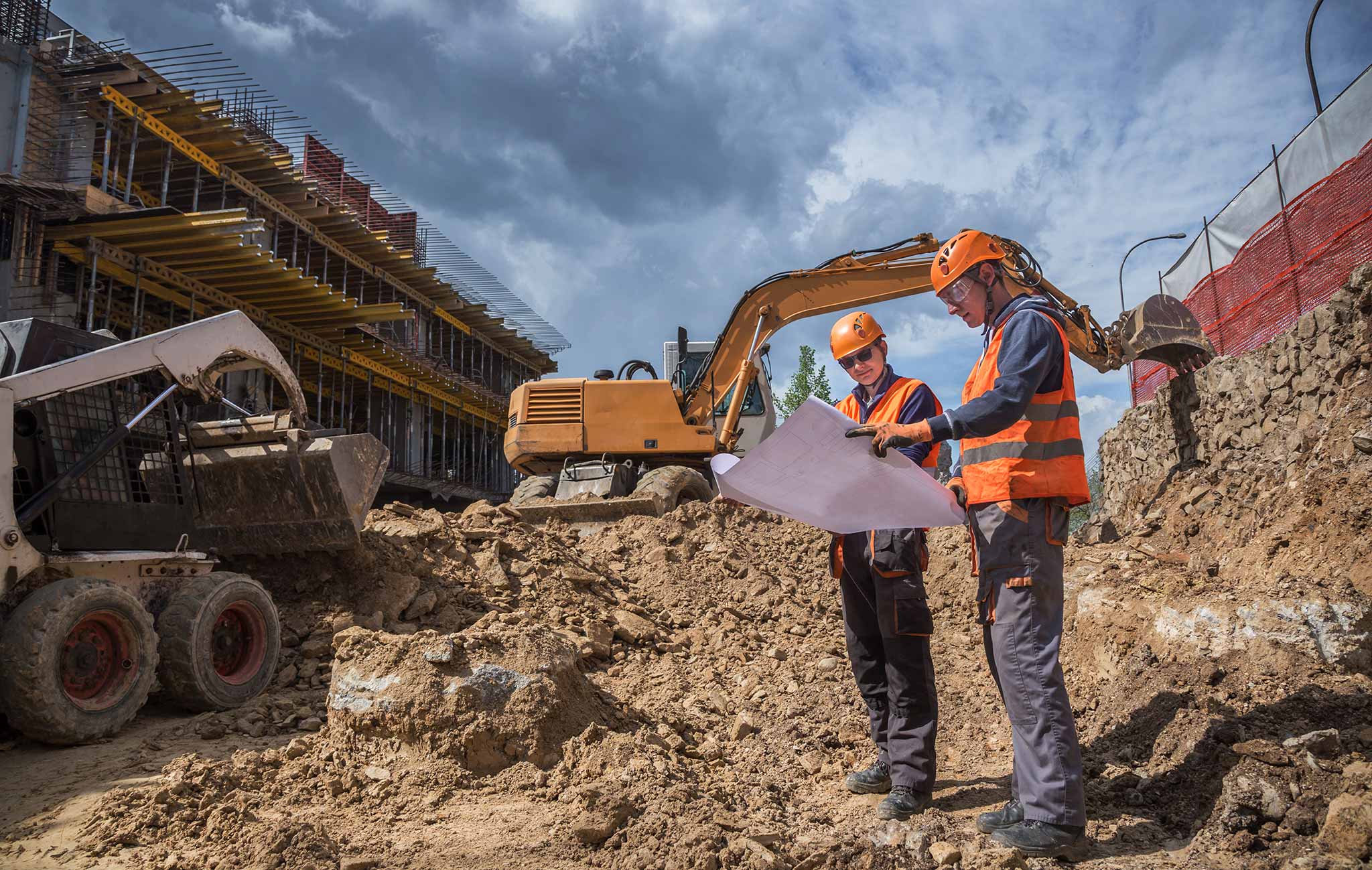Leading Geotechnical Engineers for Cutting-Edge Dirt Evaluation and Structure Design
Leading Geotechnical Engineers for Cutting-Edge Dirt Evaluation and Structure Design
Blog Article
The Interdisciplinary Approaches in the Geotechnical Sector: Linking the Space Between Design, Geology, and Environmental Scientific Research for Ideal Task Outcomes
The combination of design, geology, and ecological science within the geotechnical sector is not just helpful; it is critical for accomplishing optimum job results. This interdisciplinary partnership fosters a detailed understanding of complex site problems, permitting cutting-edge services to emerge. By taking a look at crucial functions and successful study, we can discover the vibrant interplay that drives task success. Nonetheless, obstacles remain in effectively taking care of these multidisciplinary initiatives, questioning concerning future fads and potential developments. What approaches might emerge to facilitate this crucial collaboration and enhance the efficacy of geotechnical methods?
Relevance of Interdisciplinary Partnership
The importance of interdisciplinary collaboration in the geotechnical market can not be overemphasized. Effective geotechnical tasks require the combination of diverse competence from numerous fields, including design, geology, and environmental science. This collaboration makes certain that all aspects of a job are taken into consideration, leading to extensive remedies that deal with complex obstacles.
When working in isolation,Interdisciplinary collaboration fosters technology by allowing professionals to share understandings and methodologies that may not be noticeable. By leveraging the strengths of numerous techniques, teams can determine potential dangers, optimize layout procedures, and boost the sustainability of geotechnical tasks. Moreover, such collaboration advertises an all natural understanding of site-specific conditions, which is crucial for exact evaluation and decision-making.
The complexity of geotechnical projects demands a coordinated strategy to analytical. Ultimately, interdisciplinary cooperation is necessary for progressing ideal methods and achieving excellence in the geotechnical sector.
Trick Roles of Each Discipline
Partnership amongst different techniques is not simply useful; it is crucial for the effective implementation of geotechnical jobs. Each self-control-- engineering, geology, and ecological scientific research-- plays a distinctive yet interconnected function that adds to project efficiency and sustainability.
Geotechnical engineers are primarily liable for making foundations and guaranteeing architectural honesty. They examine dirt and rock buildings to examine load-bearing capacities, offering important data for safe building methods. Their competence makes it possible for the formulation of cutting-edge services to complex challenges.

Ecological scientists assess the prospective influences of construction on ecological communities and water resources. They conduct environmental evaluations and develop reduction methods to decrease adverse impacts. By integrating ecological factors to consider, they ensure compliance with laws and advertise sustainability throughout the task lifecycle.
Case Researches of Successful Integration
Successful assimilation of geotechnical self-controls can be exemplified via various situation studies that highlight the effectiveness of team effort in dealing with complicated engineering difficulties. One remarkable example is the construction of the Hong Kong-- Zhuhai-- Macau Bridge, where a collective method including geotechnical design, geology, and ecological scientific research was essential. Rock hounds and designers operated in unison to analyze the seabed problems and optimize the structure sites layout, guaranteeing stability and minimizing ecological influence.
Another impactful situation is the enhancement of slope security in the San Francisco Bay Location, where an interdisciplinary group incorporated geotechnical evaluation with environmental assessments. By incorporating geological surveys and hydrological research studies, the team efficiently determined possible landslide risks and executed reliable reduction measures, enhancing safety and sustainability.
Moreover, the redevelopment of Brownfield websites typically calls for a multidisciplinary method. In one situation in Chicago, partnership amongst geotechnical engineers, environmental researchers, and metropolitan coordinators resulted in the effective removal of infected soil, allowing for the risk-free change of the website into a community park. These study highlight that interdisciplinary collaboration not just addresses technological difficulties yet likewise cultivates innovative remedies that profit both communities and tasks.
Challenges in Multidisciplinary Projects

Additionally, coordinating timetables and operations among various teams can be troublesome, particularly when each self-control has distinct project landmarks and deliverables. This misalignment can cause delays and boosted costs. The challenge of resource appropriation likewise impends huge; ensuring that specific expertise is available at important points requires careful preparation and insight.
Lastly, governing conformity presents another significant obstacle. Each technique may deal Your Domain Name with various governing frameworks, and lining up these demands to meet job objectives can be intricate and lengthy. Resolving these difficulties demands strong management and efficient interaction methods to cultivate cooperation and make certain that multidisciplinary groups work cohesively towards shared objectives.
Future Trends in Geotechnical Practices
As the geotechnical industry progresses, emerging fads are reshaping methods to attend to the difficulties encountered in multidisciplinary jobs - geotechnical engineers. One substantial fad is the increased assimilation of innovative innovations, such as man-made knowledge and artificial intelligence, into geotechnical analysis and design. These technologies enhance predictive modeling and threat analysis, making it possible for engineers to make more informed decisions throughout the project lifecycle

In addition, the adoption of digital twins and real-time surveillance systems is coming to be extra widespread. These devices assist in ongoing assessment of soil problems and structural performance, enabling prompt treatments when issues emerge.
Conclusion
In final thought, the assimilation of design, geology, and ecological science is vital for attaining optimal end results in the geotechnical market. Effective situation research studies illustrate the advantages of this method, while recognizing the challenges faced in multidisciplinary jobs.
The assimilation of engineering, geology, and ecological scientific research within the geotechnical market is not merely useful; it is essential for accomplishing optimum job outcomes. Effective geotechnical tasks call for the assimilation of diverse expertise from various areas, including engineering, geology, and ecological science.Browsing the intricacies of multidisciplinary jobs in the geotechnical market offers numerous significant difficulties.As the geotechnical industry progresses, arising fads are reshaping practices to resolve the obstacles dealt with in multidisciplinary tasks. Geotechnical designers are progressively teaming up with ecological scientists to make certain that projects align with sustainability objectives and abide with regulatory demands.
Report this page